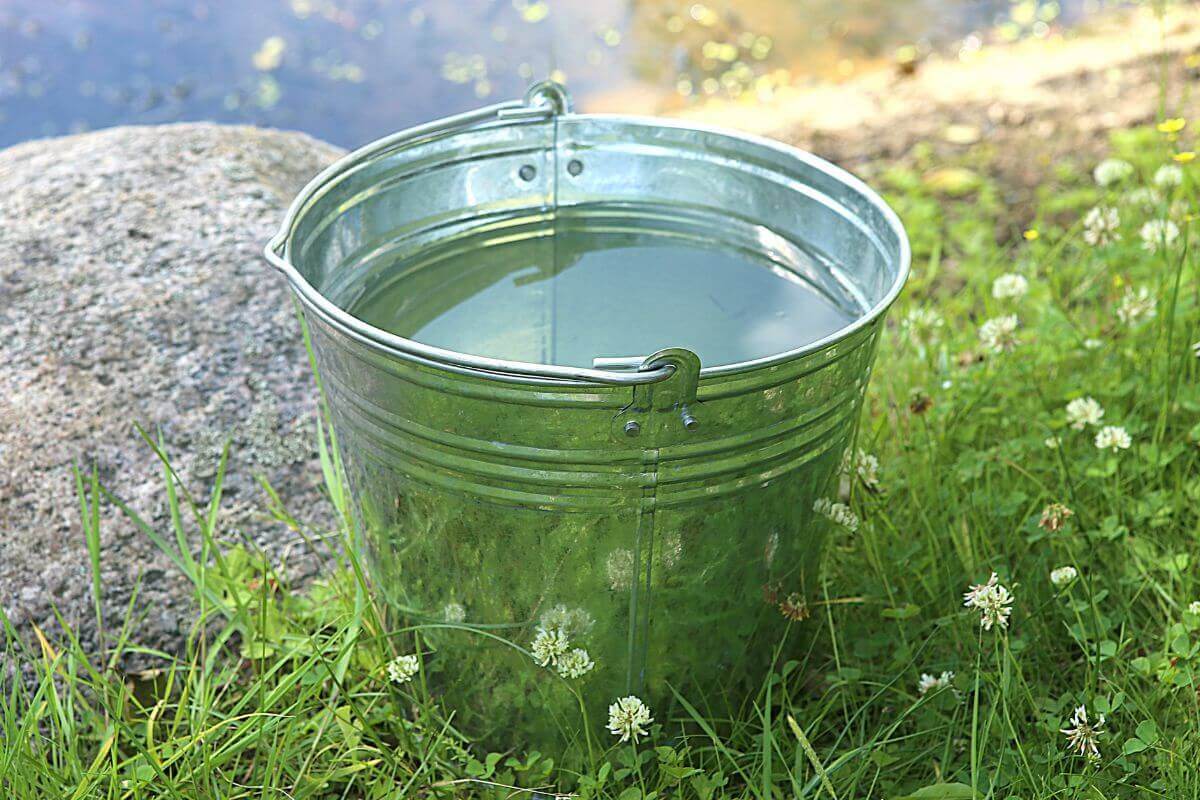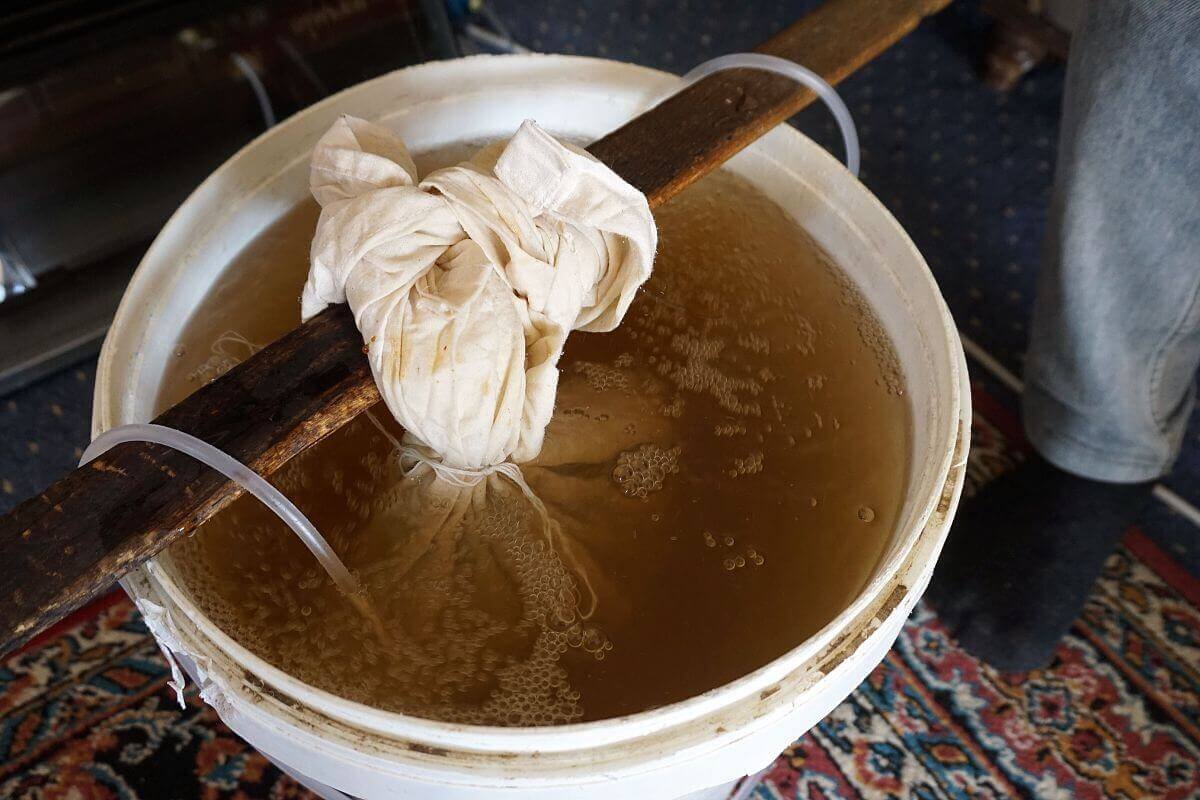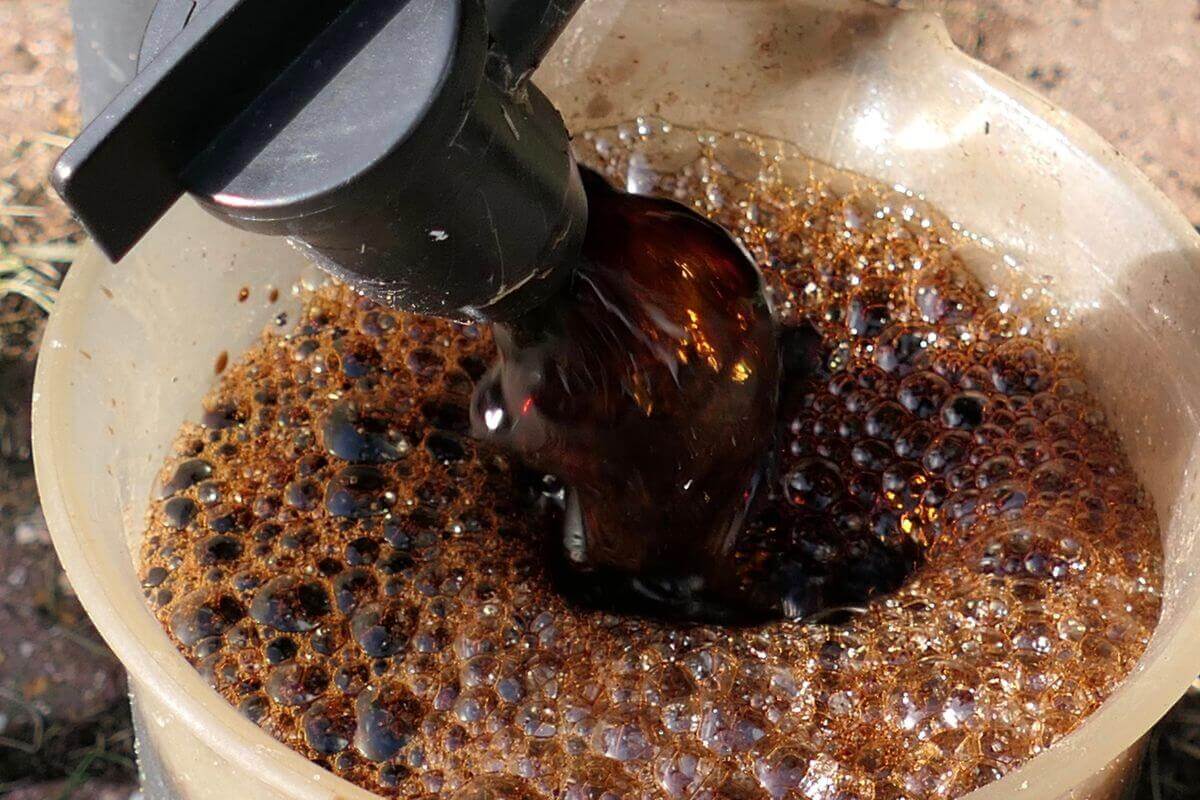Before you ask, no – worm tea is not a tea that’s made from worms!
Like gardening in general, vermicomposting has a lot of jargon, and worm tea is undoubtedly a phrase you will encounter if you are researching using worms for compost.
As you will come to find out, along with compost, worm tea is one of the best things to give to your plants for continued healthy growth.
In this article, I will take you through what worm tea is, how to use it, and how to make worm tea.
What is Worm Tea?

Many of the best worm composters have a spigot tap on the bottom for removing the leachate. Leachate is a liquid that can pool beneath the worm casting if your worm composter runs too wet.
Some sellers will say that this leachate is worm tea, but it is not.
Worm tea is water that has been used to “brew” worm castings, also known as worm poop, to create a liquid fertilizer.
The difference between worm tea and leachate is that the worm castings have been essentially sterilized by passing through a worm’s digestive system.
Leachate is a dark liquid that is run-off from decomposing foodstuffs. It often has a foul smell and is better discarded than being used as a fertilizer as it may contain harmful bacteria.
If you are unsure, a putrid odor will often indicate the presence of bacteria. Worm castings and finished compost should only have a pleasant earthy smell.
If you’ve made Compost Tea before, making worm tea is a very similar process. Both worm tea and compost tea are used in the same way as well.
Worm tea will provide nutrients and beneficial microbes to your soil and plants. It can also be used to treat some diseases, improve the condition of your soil, and keep your plants healthy, strong, and productive.
Materials Needed to Make Worm Tea

To make worm tea, you will need some materials:
1. A Bucket Container
The bucket size needed will depend on how much you’re making. You can use any container, but it is useful to know how much it will hold.
Remember to use a bucket that is bigger than your intended volume of water. For example, you’ll need a five-gallon bucket if you want to use four gallons of water.
2. Water
Ideally, it would be best to use rainwater as it doesn’t contain any chemicals found in tap water. Usually, tap water has chlorine or other minerals in it depending on your city’s water facilities.
If you are using tap water, leave it out for 24 hours before using it to allow the chlorine to evaporate. You’ll need roughly half a gallon of water for every cup of worm castings you intend to use.
3. Worm Castings
You can use however many worm castings you have. Worm tea is best used fresh, so don’t make a large batch unless you intend to use it all immediately.
You can make it as you go, as it is a good fertilizer for houseplants and outdoor plants.
4. Molasses
The sugar in molasses will encourage the growth of healthy microorganisms, much as it does with yeast.
Molasses is not essential, as you can make worm tea without it, but it does increase the benefits of the finished worm tea.
Use about a tablespoon of molasses for every two cups of worm castings you are using.
5. A Filter or “Tea Bag”
A filter will help prevent any bits from clogging up your can or spray bottle by filtering the tea.
You can strain the finished tea through a coffee filter or a similar material to create a DIY “tea bag,” but it is much easier to put your castings into something first. You can use any material, like an old t-shirt, dishcloth, or muslin.
How to Make Worm Tea

Once you have assembled all your materials, you can start to brew your tea. Here are the step-by-step instructions on how to make worm tea:
Step 1 – Fill the bucket with water.
Step 2 – If using a “teabag” for your worm tea, put the worm castings and molasses into your bag and tie it shut. Add your “teabag” to the water and swish it around a bit to stir up the contents. If you plan to strain the tea afterward, add the castings and molasses to the water and stir it well.
Step 3 – Let the tea steep overnight.
Step 4 – In the morning, your tea should be a light brown. Give it another stir, or swish the “teabag” around.
Step 5 – Strain the tea, or remove the bag. You can add the remainder of the casting to your compost.
Step 6 – Pour your worm tea into a watering can or spray bottle to use as a liquid fertilizer. The microbes will start to die off pretty quickly, so your worm tea will not last if left out. You should use it within 24 hours as it will lose its potency after that.
How to Use Worm Tea

Worm tea is beneficial for the health of soil and plants. It can be used on any plant – including vegetables, shrubs, and houseplants – to boost nutrients and keep them free from disease.
Worm tea can also be used as a compost starter and accelerator to increase the microbial activity of your compost pile.
Read more about compost accelerators in my other article, Compost Starters Guide.
Worm tea can be added to your watering can and used as liquid fertilizer. You can use it in a sprayer for plants that don’t need much water, like succulents, or you can spray it on your lawn to improve the color and condition of the grass in your yard.
You can use worm tea as much as you like, and you aren’t in any real danger of giving your plants too much. In this way, it stands out against other chemical fertilizers as one of the best general fertilizers and soil conditioners you can get.
The best thing about worm tea is that you can make it for next to nothing if you are already vermicomposting.
Worm Tea Final Thoughts
Worm tea is incredibly beneficial as a liquid fertilizer. You may wonder if it is too much bother going through the tea-making process when you can just add the worm castings to your garden.
The benefit of making worm tea is that a little goes a long way. You can produce half a gallon of worm tea from just one cup of castings. You can use the worm tea diluted in water to give a boost to a lot of plants.
Worm tea also has no waste. The used castings can still be added to your compost or dug directly into garden soil to improve the condition.
If you have used a fabric “teabag,” it is obviously re-usable, but it is a good idea to use a natural material that can be composted when it is no longer functional.
Of course, the best way to start making worm tea is to use worm castings from a worm composter. However, if you do not have a worm composter, you can purchase worm castings online.
Learn more about composting with these articles:


